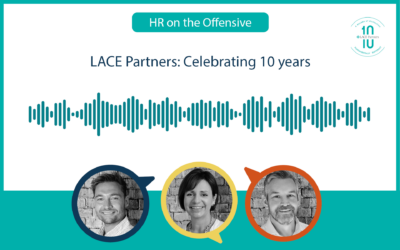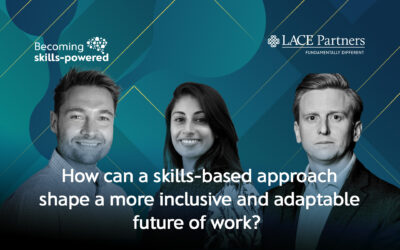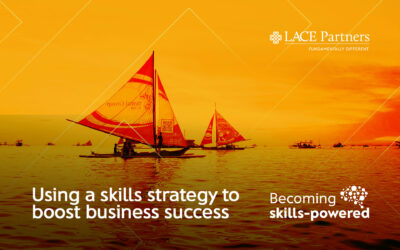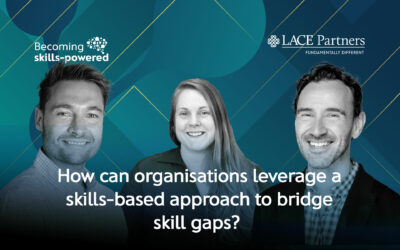How can leaders get the most from their people? How can leaders build trust from their workforce? Is vulnerability from the top sustainable? These were just a few questions discussed in the latest ‘In The Spotlight’ podcast from the Guild of HR Professionals. Have a read below for a debrief of the great discussion between Nicola Forbes-Taylor, Aaron Alburey and Annette Andrews.
Leadership – it’s about connection, it’s about being authentic, it’s about sharing experiences and the ‘whole you’ so that people realise you are human. There are still some people who think that leadership is a part of themselves that they must box off; they separate the vulnerable parts of themselves from their persona as a leader. The assumption is that what people need from you is strength, and therefore you cannot show any vulnerability. But there is a power in vulnerability.
In many ways Covid has been a catalyst to the humanisation of leaders, but is it here to stay? Is it sustainable?
How did Covid turn up the volume on what was already there? Pre Covid there was a rhythm to how a leader interacted with their team, motivated their team, drove performance and addressed performance. Having to do all of this remotely turned up the volume on the vulnerabilities of that and, in so doing, it put additional pressure on these leaders. Is it sustainable for a leader to be one way all the time? No, it’s not, because we all are human and we all have ups and downs. Can we sustain being vulnerable? The straightforward answer is no, not continually. But we can continually work on it.
What’s in a name?
If we change the word ‘vulnerable’ to ‘human’, people feel more comfortable, as it has less extreme connotations. Sime people see vulnerability as weakness. If we re-frame we can talk about ‘real’ and ‘wholeness’, which gives more positive connotations, then we start to see how leaders connect through demonstrating that they are human, so that when their team see that they become more inclined to follow them.
That is where having a personal coach can be important for a leader and is certainly something for every leader reading this blog to think about. There is an old–school remnant perspective that a coach is for something broken and is remedial. However, any sportsperson could have a coach because they want to be the best they can, so why not apply the same logic to a businessperson and a leader? A personal coach can support you, to provide a safe space where you aren’t burdening anyone as it isn’t your partner, you aren’t breaking confidence and you don’t need to impress them as they aren’t an investor or a member of your team.
Building rapport and trust
If you start to give a bit of yourself to someone it’s amazing because they will reciprocate, and you can grow from there. It can feel a bit uncomfortable but it’s about building that rapport and trust. One approach you can consider is the Johari window model. If somebody has a blind spot and you need to give them feedback, you need trust to do that. You do this by sharing a bit of yourself. Think about your disclosure-feedback ratio, because if someone isn’t very self-aware, they will need more disclosure from you.
What effect has remote working had on the proximity between employees and their managers?
There is now a window into people’s personal lives. Their homes, their kids, their dogs and gin collections. At work in the office there is an artificial wall, but that has been peeled back.
It’s a bit invasive as someone is suddenly in your kitchen. People you wouldn’t normally have in your home, are in your home.
You may have noticed that at the beginning of the first lockdown that people were a bit stiff and proper over the video platforms they were using (Microsoft Teams, Zoom, Workplace by Facebook, etc), but they become increasingly relaxed in how they were dressing and about their cats and kids coming in. As we returned to the office however, people became a bit more formal again and thought more about what they were wearing. This is an interesting indicator of work life and home life muddling together.
What are some of the challenges leaders are facing now?
Some leaders that adapted their management style to Zoom found it incredibly difficult. ‘Work people’ were encroaching into their private lives when they had always been kept separate. We were coming to the end of lockdown and people were relieved that it was done. It’s fair to say that people who went with the flow more and opened up their lives are probably finding it easier in second lockdown.
People are struggling with boundaries (“where is my work life” or “where is my home life?”). Our lives don’t have these boxes anymore so there needs to be an acceptance of the blend. Before there was a routine: get up, uniform, journey, start work, journey and then back to home life. There are positives to this new state that we find ourselves in, such as humanisation, but there are also risks. Employees are not feeling confident enough to talk up and say that they are working too hard and they need a break. Many organisations are now recognising this and working to manage the pressure from this merging of work and home. That is where it is incumbent on HR, on the front line of employee experience, to ensure that they keep employees engaged, communicating with their line managers and peers, not being afraid to stand up and say when they are feeling the strain. HR has delivered fantastic results in supporting its businesses in 2020 and all businesses will continue to lean on HR in 2021, even if some kind of normality returns in the Spring.
Want to hear the full podcast? Subscribe to the ‘In The Spotlight’ podcast from the Guild of HR Professionals for weekly insights into what is happening in the HR space.






